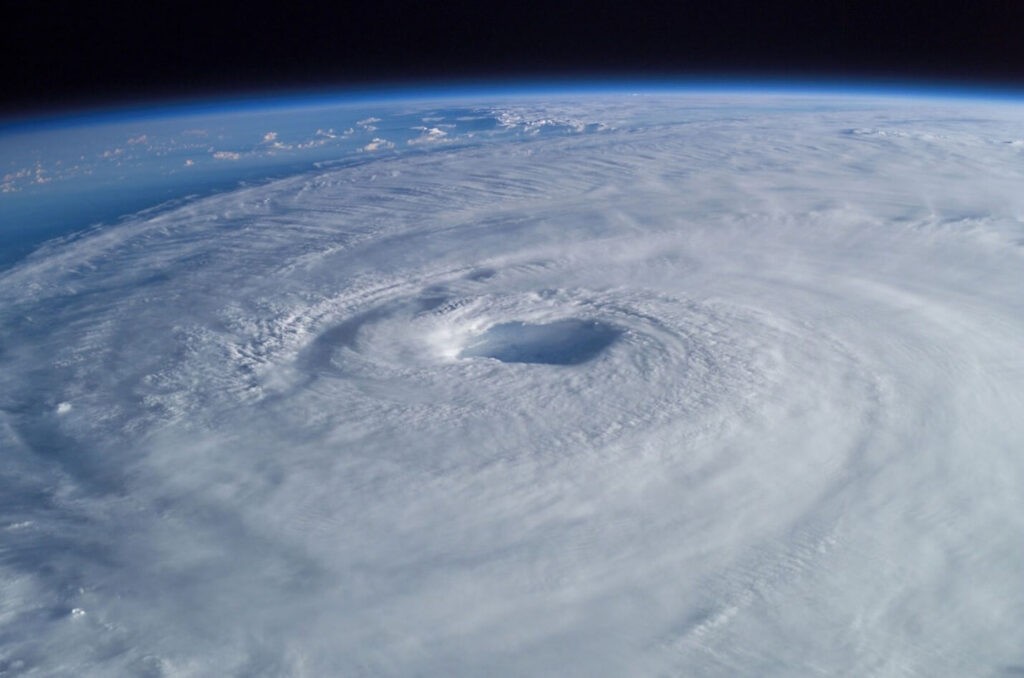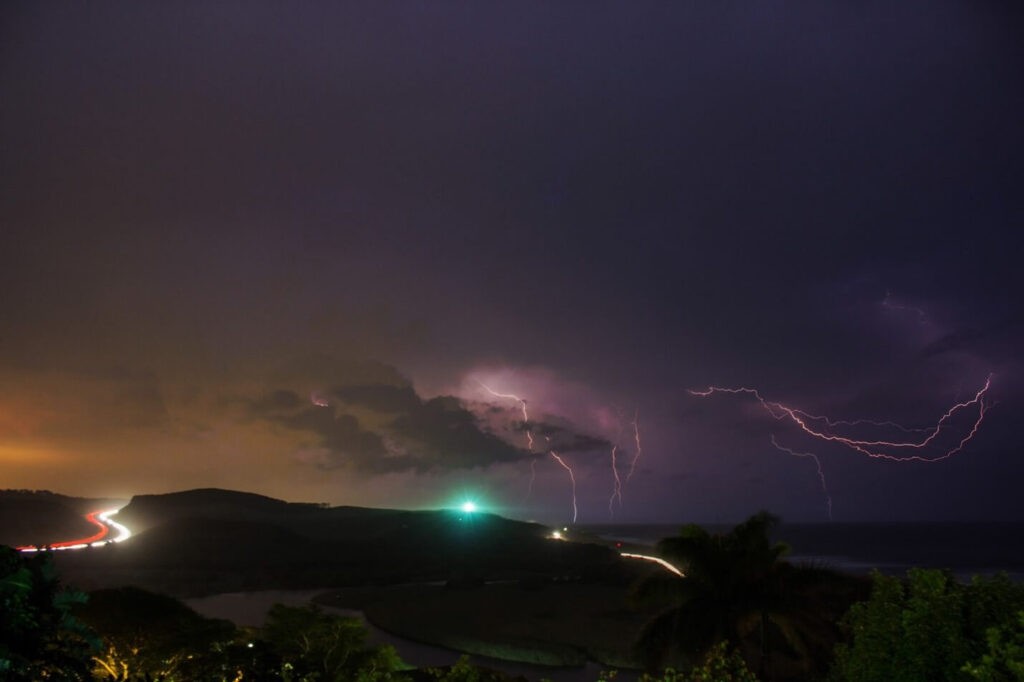Are you planning a trip to Vietnam and wondering about the weather patterns? Does Weather Travel West To East? Yes, it generally does, especially in mid-latitude regions like the United States, driven by the Coriolis effect and jet streams. SIXT.VN can help you navigate Vietnam’s climate, ensuring a smooth and enjoyable journey with reliable transportation, comfortable accommodations, and unforgettable tours. You can expect expert travel advice and seamless bookings and transportation when you use SIXT.VN.
1. Understanding the Coriolis Effect and Its Impact on Weather
Does weather travel west to east because of the Coriolis effect? Yes, the Coriolis effect is a key factor. This phenomenon causes moving objects, like air currents, to be deflected due to the Earth’s rotation. This deflection results in winds in the Northern Hemisphere generally moving eastward, contributing to the west-to-east movement of weather systems. Therefore, weather patterns in the Northern Hemisphere, including the US, are largely dictated by this effect.
 Coriolis Effect on Earth
Coriolis Effect on Earth
The Coriolis effect doesn’t just influence the direction of wind; it also affects ocean currents, contributing to global climate patterns. According to research from the National Oceanic and Atmospheric Administration (NOAA), in 2023, the Coriolis effect plays a crucial role in shaping weather systems by influencing both wind and water movement. The strength of this effect varies with latitude, being strongest at the poles and weakest at the equator. Understanding this variation is essential for comprehending regional differences in weather patterns. This is crucial when planning travel to Vietnam, where regional weather variations can significantly impact your trip.
2. The Role of Jet Streams in Guiding Weather Systems
Are jet streams responsible for how weather systems travel from west to east? Absolutely. Jet streams are high-altitude, fast-flowing air currents that act as guides for weather systems. In the Northern Hemisphere, they typically move from west to east due to the influence of the Coriolis effect. These jet streams, particularly the polar and subtropical jet streams, play a crucial role in steering weather patterns across continents.
The polar jet stream, which carries cold air from the Arctic, and the subtropical jet stream, which brings warm air from the tropics, often interact, resulting in significant weather events such as storms and temperature fluctuations. According to a 2022 report by the World Meteorological Organization (WMO), jet streams are vital in determining the intensity and path of major weather systems. This understanding is paramount for accurate weather forecasting and for planning activities such as tourism or agriculture. SIXT.VN considers these factors to ensure you have the best travel experience.
3. How Cyclonic Movement Influences Weather Direction
Does the spin of cyclones affect weather’s west-to-east path? Yes, cyclonic movement significantly influences weather patterns. High-pressure systems (anticyclones) rotate clockwise in the Northern Hemisphere and generally bring stable weather, while low-pressure systems (cyclones) rotate counterclockwise and are associated with unsettled conditions such as rain and strong winds. The Earth’s rotation then pushes these systems eastward.
 Cyclonic Movement
Cyclonic Movement
Cyclones and anticyclones are fundamental to understanding regional weather patterns. According to research from the National Weather Service (NWS), understanding the dynamics of these systems is critical for predicting extreme weather events. Cyclones can lead to hurricanes and severe storms when specific atmospheric conditions are present, such as warm ocean waters and low wind shear. Anticyclones, on the other hand, can result in heatwaves and droughts. These insights help SIXT.VN provide timely travel advisories and safe travel options for your journey in Vietnam.
4. Exploring Global Wind Patterns in Mid-Latitudes
How do global wind patterns contribute to weather moving west to east? They play a vital role. In the mid-latitudes, where the United States is located, the prevailing winds are the westerlies, which move from west to east. These winds are part of a larger system of global wind patterns driven by the Earth’s rotation and the distribution of solar energy. Each hemisphere has three primary cells—Polar, Ferrel, and Hadley—that influence wind movement.
The westerlies, influenced by the Ferrel cells, are responsible for carrying weather systems across the US and other mid-latitude regions. According to a 2021 study by the Intergovernmental Panel on Climate Change (IPCC), changes in these wind patterns can have significant impacts on regional climates. Variations in the strength and position of the westerlies can lead to shifts in precipitation patterns and temperature distributions. Being aware of these patterns allows SIXT.VN to offer the best times to visit different regions and to prepare you for potential weather conditions.
5. The Influence of Topography and Local Effects on Weather Patterns
Can mountains and coastlines affect how weather travels from west to east? Yes, topography and local geographical features can significantly influence weather patterns, often modifying the general west-to-east flow. Mountains, coastlines, and large bodies of water can all affect temperature, precipitation, and wind patterns.
 Topography Influence
Topography Influence
For instance, the Rocky Mountains create a rain shadow effect, causing the western side to be wet and the eastern side to be dry. Similarly, the Great Lakes can lead to lake-effect snow in the winter. Coastal regions often experience milder temperatures due to the moderating influence of the ocean. According to a report by the United States Geological Survey (USGS), local topography can create microclimates with unique weather conditions. This means travelers to Vietnam can encounter different weather scenarios in various regions.
6. Seasonal and Regional Variations in Weather Patterns
Are weather patterns consistent throughout the year? No, seasonal and regional variations play a crucial role in how weather patterns manifest. Factors such as solar radiation, jet stream patterns, temperature contrasts, and ocean-atmospheric interactions all contribute to changing weather conditions throughout the year.
In the summer, for example, increased solar radiation can lead to warmer temperatures and more intense storms, while in the winter, the polar jet stream can bring colder temperatures and snowstorms. The interaction between warm and cold air masses, particularly in regions like the Gulf Coast, can result in severe weather events. According to a 2020 study by the National Aeronautics and Space Administration (NASA), understanding these seasonal shifts is essential for predicting weather and climate trends. SIXT.VN offers tailored travel advice based on these seasonal variations to enhance your travel experience.
7. How Weather Patterns Affect Travel in Vietnam
How can understanding weather patterns improve your trip to Vietnam? Understanding these patterns is crucial for planning a trip to Vietnam. Vietnam experiences a diverse range of climates due to its varied topography and geographical location.
For instance, the northern part of Vietnam has a distinct winter and summer, with cooler temperatures and occasional rainfall in the winter months. The central region is prone to typhoons and heavy rainfall during the monsoon season, while the southern part enjoys a tropical climate with warm temperatures year-round. Being aware of these regional variations helps in packing appropriately and planning the best time to visit specific areas.
8. SIXT.VN: Your Partner for Navigating Vietnam’s Weather
How can SIXT.VN help you plan your trip considering the weather? SIXT.VN offers comprehensive travel services tailored to the unique weather conditions in Vietnam. We provide:
- Real-Time Weather Updates: Accurate and timely weather forecasts to help you plan your daily activities.
- Flexible Transportation: Reliable airport transfer and car rental services to ensure safe and comfortable travel in any weather.
- Accommodation Booking: A wide range of hotels and resorts that provide shelter and comfort, no matter the weather conditions.
- Customized Tour Packages: Expertly designed tours that take into account the best times to visit different regions, avoiding adverse weather conditions.
9. Addressing Common Travel Challenges in Vietnam
What are the common challenges travelers face due to weather, and how does SIXT.VN address them? Travelers in Vietnam often face challenges such as unexpected rain, heat, and occasional typhoons. SIXT.VN addresses these challenges by:
- Providing Weather-Appropriate Transportation: Ensuring vehicles are well-maintained and equipped to handle various weather conditions.
- Offering Flexible Booking Options: Allowing changes to travel plans due to unforeseen weather events.
- Providing Local Support: Offering 24/7 customer support to assist with any weather-related issues during your trip.
- Recommending Suitable Activities: Suggesting indoor or weather-appropriate activities during adverse conditions.
10. Maximizing Your Travel Experience with SIXT.VN
How can SIXT.VN enhance your overall travel experience in Vietnam? With SIXT.VN, you can maximize your travel experience by taking advantage of our full range of services. From providing seamless airport transfers to booking comfortable accommodations and offering customized tour packages, we ensure that all your travel needs are met. Our expert local knowledge and commitment to customer satisfaction guarantee a memorable and stress-free journey in Vietnam. So, whether you’re planning to explore the bustling streets of Hanoi or relax on the beautiful beaches of Phu Quoc, SIXT.VN is your trusted partner for a perfect trip.
Are you ready to experience Vietnam? Visit SIXT.VN today to plan your trip with confidence. Let us handle the details, so you can focus on enjoying your adventure.
Address: 260 Cau Giay, Hanoi, Vietnam
Hotline/Whatsapp: +84 986 244 358
Website: SIXT.VN
Frequently Asked Questions (FAQ)
1. Why does weather generally move from west to east in the US?
Weather generally moves from west to east in the US because of the Coriolis effect and the prevailing westerlies. The Coriolis effect deflects winds eastward, and the westerlies are the dominant wind patterns in the mid-latitudes.
2. What role do jet streams play in the movement of weather systems?
Jet streams are high-altitude air currents that guide weather systems. They typically move from west to east and influence the direction and speed of weather patterns.
3. How does topography affect weather patterns?
Topography, such as mountains and coastlines, can significantly influence weather patterns. Mountains can create rain shadows, while coastlines can moderate temperatures.
4. What are the Ferrel cells, and how do they relate to weather patterns?
Ferrel cells are part of the global atmospheric circulation system and influence the westerlies, which move weather systems from west to east in the mid-latitudes.
5. How do seasonal changes affect weather patterns in Vietnam?
Seasonal changes in Vietnam result in variations in temperature and precipitation, affecting the best times to visit different regions.
6. What is the Coriolis effect, and how does it influence wind direction?
The Coriolis effect is the deflection of moving objects due to Earth’s rotation. In the Northern Hemisphere, it causes winds to deflect to the right, resulting in eastward movement.
7. Can local weather patterns disrupt the general west-to-east movement of weather?
Yes, local weather patterns can disrupt the general west-to-east movement of weather due to topographical features and regional climate conditions.
8. How can I stay updated on weather conditions during my trip to Vietnam?
You can stay updated by checking real-time weather forecasts, subscribing to weather alerts, and consulting local weather resources. SIXT.VN also provides up-to-date weather information for our customers.
9. What should I pack for a trip to Vietnam considering the diverse weather patterns?
Pack a variety of clothing to accommodate different weather conditions. Include lightweight, breathable fabrics for warm temperatures and rain gear for wet seasons.
10. How does SIXT.VN ensure customer safety during adverse weather conditions in Vietnam?
SIXT.VN ensures customer safety by providing well-maintained vehicles, flexible booking options, and 24/7 customer support to assist with any weather-related issues during your trip.



